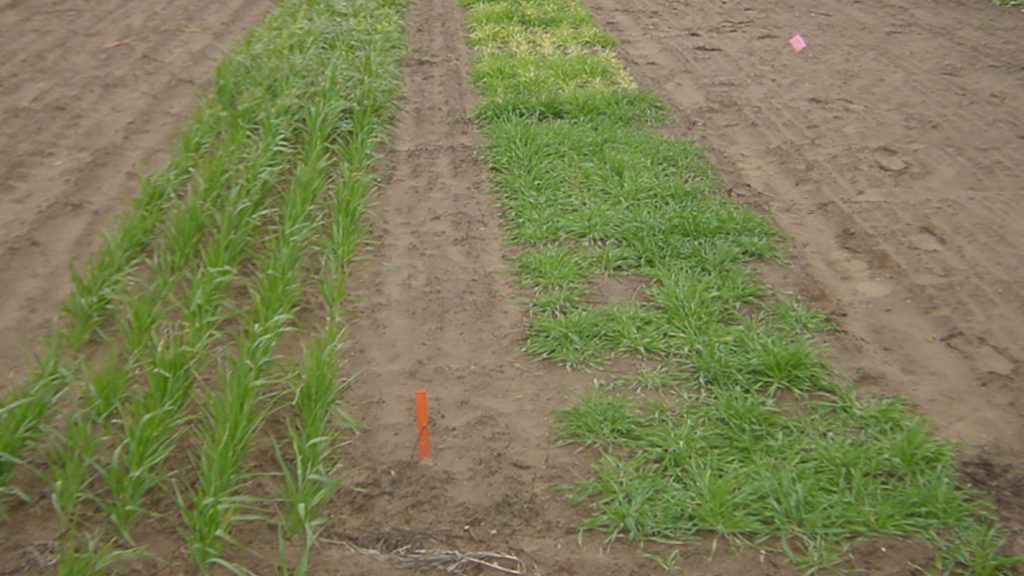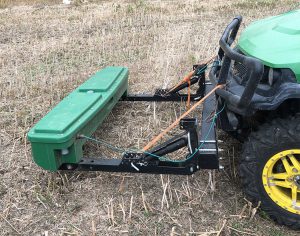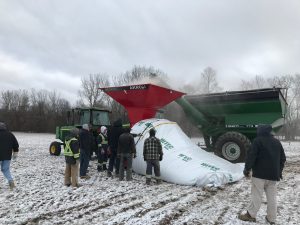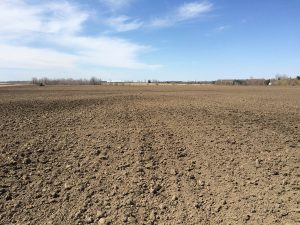Herbicide carryover
PREVENTING CROP INJURY

the 2020 growing season saw many reports of crop injury due to herbicide carryover. Some crops grown in Ontario are very sensitive to carryover, particularly some horticulture crops. When growing crops on land that could have a sensitive crop planted after, it is important to pay attention to what herbicides are being applied.
“Prevention is the most critical piece of preventing crop injury due to herbicide carryover,” says Dr. Darren Robinson, University of Guelph Ridgetown Campus. Robinson presented the Herbicide Carryover session at the Ontario Agricultural Conference along with Mike Cowbrough, weed management specialist at the Ontario Ministry of Agriculture, Food and Rural Affairs.
The best way to prevent herbicide carryover is to know the crop rotation ahead of time, and ideally have the rotation planned at least four years ahead of planting. Robinson understands, “it’s a big ask. But by doing so farmers can better plan around known weed issues and which herbicides they can use that will be compatible”.
When working with vegetable crops, there are many of them that it is imperative to watch for herbicide carryover. There has been reports of carryover injury in sugar beets up to three years, as they are very sensitive. For the field crops side, there is a little less to worry about. Although it was noted that edible beans can show some herbicide injury, with each type of edible bean responding differently.
Robinson says that once the crop rotation is established, farmers should have good soil mapping done and know their soil characteristics including texture, organic matter, pH, and cation exchange capacity as they all have an impact on herbicide persistence in soil. A composite sample would be the bare minimum, ideally grid sampling would be the best option.
READ LABELS
It is imperative to read labels, paying close attention to what the rotation restrictions or re-cropping guidelines are. Being sure to reference the correct region of Canada when looking at labels, as restrictions can change across the country. Re-cropping restrictions can also be found in Publication 75, Guide to Weed Control.
Re-cropping restrictions are established by two- to three-year trials being completed. Each herbicide company needs to produce the results on their label. Every trial includes sugar beets, due to their sensitivity, along with several different potentially sensitive crops from different crop groups. Twice the labelled rate is typically used to simulate overlap, and to give some conservative results or to take into account if there are extreme weather events, essentially creating a worst-case scenario. For each trial, visual crop injury, biomass, multiple stand counts at set intervals, along with stand counts after a heavy rainfall event, are collected along with yield. The determined re-cropping interval is typically based on yield and crop injury for most crops.
If a label provides no guidance on re-cropping intervals, sometimes this may indicate that there is no effective herbicide carryover, sometimes it is because there is no data. Typically, this is only an issue with older chemicals. Always use caution on what you are applying and what is being planted afterwards, considering when the application is occurring in the season.
BREAKDOWN
It is important to understand that herbicide breakdown occurs primarily through two ways; through soil microbes and chemical hydrolysis. Moisture and temperature influence both types of breakdown. Robinson has observed that the amount of rainfall received in the first month after a herbicide is applied, and the soil temperatures after the first month of application show greatest degree of relation between the amount of herbicide carryover. Dry weather for the first month after application increases the chance of carryover. Organic matter and texture can affect breakdown as they bind the herbicide; pH is a bit different and can affect some herbicides one way and others a different way.
If a herbicide was applied, and then the crop rotation did need to be changed, Robinson has looked at whether using tillage and/or fall seeded cover crops can help with herbicide breakdown. Both options for a farmer are fairly inexpensive and don’t require a lot of time.
Tillage has been found to some degree to reduce the amount of carryover. The hypothesis is that tillage causes some dilution effect, possibly also increasing the amount of degradation that occurs microbially, due to a bump in the microbial population, as long as there is available moisture.
If using cover crops to help increase the rate of herbicide, good establishment is key and the cover crop chosen would definitely have to have some tolerance to the herbicide to be useful. Robinson has also considered if manure was added and incorporated. Manure could increase microbial populations to some degree. Dr. Robinson mentioned that some are concerned that adding manure may tie up the herbicide further, but that is all speculative. One thing to keep in mind though, is that the herbicide concentration is already at a very low level, if you have a crop that is already sensitive to such a low level, it is difficult to completely dissipate the risk.
The overall take home point is to avoid herbicide carryover — plan and stick to that plan.
Laura Ferrier is an agronomist with Grain Farmers of Ontario.
This article is based on information provided during a session of the Ontario Agricultural Conference. Grain Farmers of Ontario was a sponsor of this conference. •



























